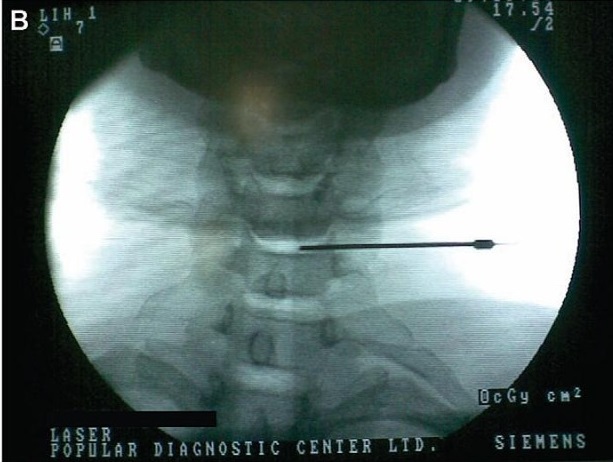1. Make the Extend Leg Elevation test and note the amount of elevation.
2. Place the patient in the supine position on the CT table.
3. Establish the injection sites and routes with the use of computed tomography.
4.Perform sterilization and local anesthesia.
5.Insert the 18G needle about 8 cm in the centerline towards the center of the disc. Check that the needle is in the correct position by performing a CT scan.
6.Remove the stylet of the needle, then insert the 400 μm optical fiber. Extend the end of the fiber about 3-5 mm, then connect the Y-rotating connector.
7. Turn on the power, select the operating parameters on the screen and start the laser.
8.Laser energy causes the herniation of the intervertebral disc to evaporate, and then to lower the intrasidial pressure. During the procedure, when the patient experiences swelling or pain, use the Y valve to draw the lymph.



